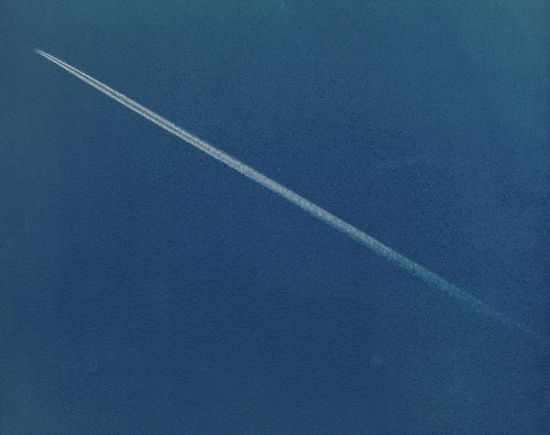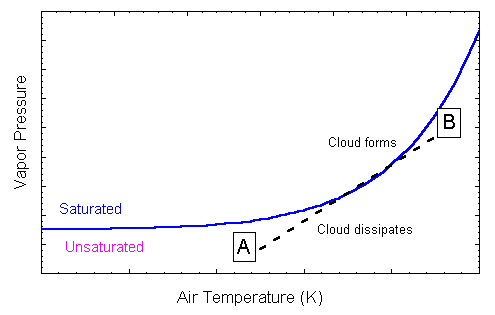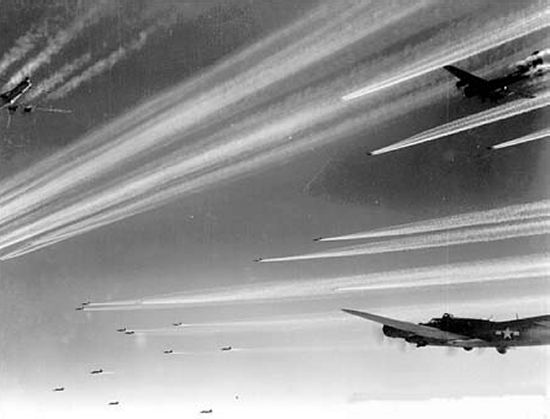|
||||||||||
|
|
||||||||||
|
||||||||||
|
|
||||||||||

However, contrails are not specific to any particular kind of aircraft or speed range. They can be formed by military or civil aircraft, piston- or jet-powered planes, subsonic or supersonic vehicles, aircraft or rockets. The type of vehicle is irrelevant, but what is key to the formation of contrails is atmospheric conditions. Contrail formation is dependent upon the temperature, relative humidity, and pressure at which the vehicle is flying as well as the ratio of moisture to heat produced by the vehicle's engine. In particular, the ambient air must be at low temperature and low vapor pressure. Vapor pressure is the pressure of water vapor within the atmosphere.
The ambient air mixes with the hot, humid exhaust because of turbulence generated by the exhaust flow. If that mixture happens to be saturated or supersaturated with moisture, a contrail will form. The following figure illustrates the conditions under which clouds or contrails form. The blue line represents the saturation vapor pressure of ice versus air temperature. If the vapor pressure equals or exceeds this line at a given temperature, the water vapor will condense to form ice crystals.

The points labeled A and B represent two hypothetical conditions, both unsaturated. Let's assume that point A is the temperature and vapor pressure of the ambient air at the aircraft's cruising altitude. Point B is the conditions within the aircraft's exhaust. As the two mix, the temperature and pressure equalize. If the final conditions intersect or lie above the blue line, the mixture becomes saturated and a contrail will form. Otherwise, the mixture remains unsaturated and dissipates.
Eventually, all clouds and contrails will dissipate, but the length of time they endure is related to the atmospheric conditions as well as the strength of the winds. If the contrail is formed when the local atmosphere is dry, it may dissipate rapidly. But if the atmosphere is near saturation, it will exist for a long period of time, perhaps spreading or mixing with naturally-formed clouds until it is unrecognizable as a contrail.
It is for this latter reason that many climatologists have become concerned about the increase in air travel over recent decades. It has been estimated that cloud cover may increase by up to 20% in some heavily-traveled areas due to man-made contrails. This increase could have a significant effect on the climate in those regions since clouds block solar radiation. Designers of modern stealth aircraft must also be concerned about contrails since they can easily give away a plane's location to an observant enemy. While methods have been developed to inject (usually toxic) chemicals into a vehicle's exhaust to eliminate contrails, it's usually far more preferable to simply increase or decrease altitude until the atmospheric conditions no longer support their formation.

Nevertheless, contrails are often a remarkably beautiful sight, particularly if they are created by several
aircraft in formation. Perhaps some of the greatest concentrations of contrails ever seen were generated by the
mass high-altitude bomber formations of World War II, such as the above view of contrails formed by a group of
B-17 Flying Fortresses.
- answer by Jeff Scott, 16 February 2003
Related Topics:
Read More Articles:


|
Aircraft | Design | Ask Us | Shop | Search |

|
|
| About Us | Contact Us | Copyright © 1997-2023 | |||
|
|
|||